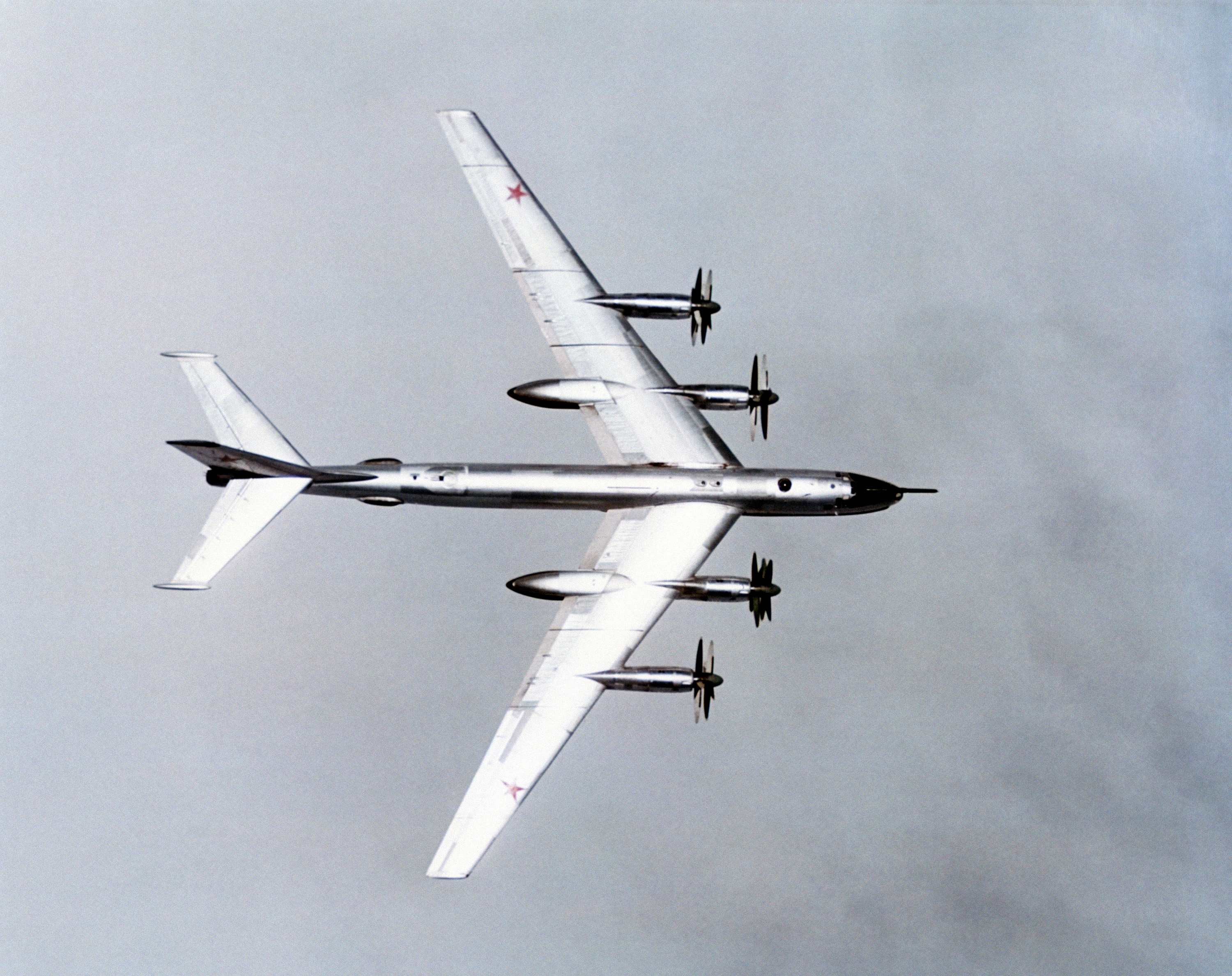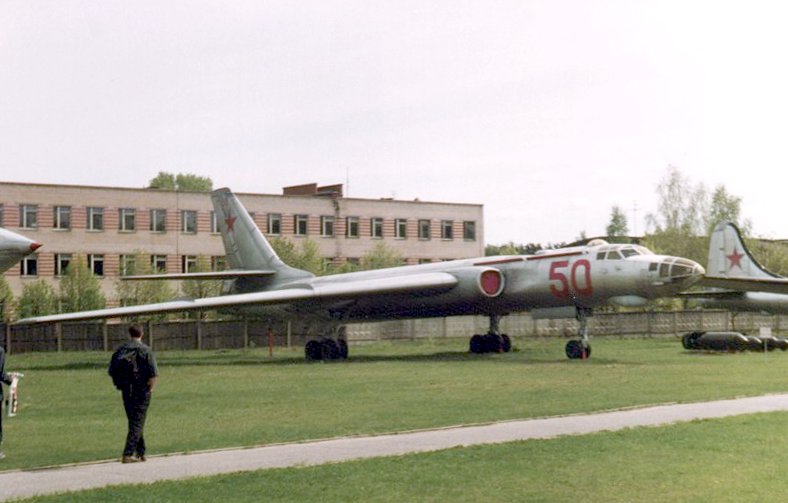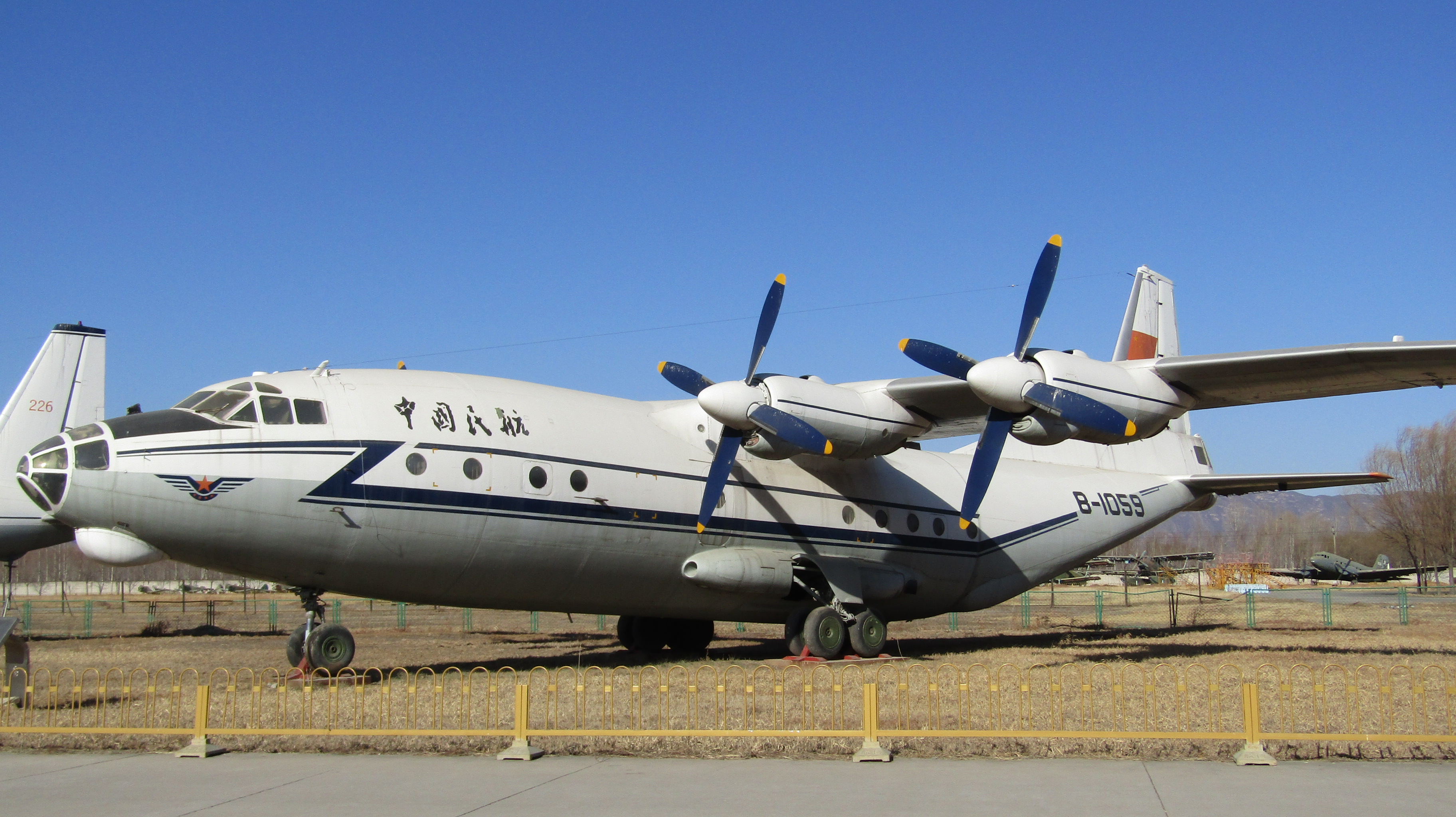|
Nudelman NR-23
The Nudelman-Richter NR-23 is a Soviet autocannon widely used in military aircraft of the Soviet Union and Warsaw Pact. It was designed by A. E. Nudelman and A. A. Richter to replace the wartime Nudelman-Suranov NS-23 and Volkov-Yartsev VYa-23, entering service in 1949. The NR-23 is a single-barrel, short recoil-operated 23 mm (0.90 in) cannon. It was similar to the NS-23 but mechanical improvements increased its rate of fire by more than 50%. Its theoretical rate of fire was 850 rounds per minute, although United States Air Force tests of captured weapons achieved an actual rate of fire of only 650 rounds per minute. The NR-23 was later replaced by the Afanasev Makarov AM-23 automatic cannon which had a higher firing rate. The AM-23 was used in turreted installations for bombers. It was a gas-operated weapon, weighed 43 kg (95 lb) and was capable of a substantially higher rate of fire (1,200–1,300 rounds per minute). The People's Republic of Chi ... [...More Info...] [...Related Items...] OR: [Wikipedia] [Google] [Baidu] |
Barbette
Barbettes are several types of gun emplacement in terrestrial fortifications or on naval ships. In recent naval usage, a barbette is a protective circular armour support for a heavy gun turret. This evolved from earlier forms of gun protection that eventually led to the pre-dreadnought. The name ''barbette'' ultimately comes from fortification - it originally meant a raised platform or mound, as in the French phrase ''en barbette'', which refers to the practice of firing a cannon over a parapet rather than through an embrasure in a fortification's casemate. The former gives better angles of fire but less protection than the latter. The disappearing gun was a variation on the barbette gun; it consisted of a heavy gun on a carriage that would retract behind a parapet or into a gunpit for reloading. Barbettes were primarily used in coastal defences, but saw some use in a handful of warships, and some inland fortifications. The term is also used for certain aircraft gun mounts. Sh ... [...More Info...] [...Related Items...] OR: [Wikipedia] [Google] [Baidu] |
Fighter Aircraft
Fighter aircraft are fixed-wing military aircraft designed primarily for air-to-air combat. In military conflict, the role of fighter aircraft is to establish air superiority of the battlespace. Domination of the airspace above a battlefield permits bombers and attack aircraft to engage in tactical and strategic bombing of enemy targets. The key performance features of a fighter include not only its firepower but also its high speed and maneuverability relative to the target aircraft. The success or failure of a combatant's efforts to gain air superiority hinges on several factors including the skill of its pilots, the tactical soundness of its doctrine for deploying its fighters, and the numbers and performance of those fighters. Many modern fighter aircraft also have secondary capabilities such as ground attack and some types, such as fighter-bombers, are designed from the outset for dual roles. Other fighter designs are highly specialized while still filling the ma ... [...More Info...] [...Related Items...] OR: [Wikipedia] [Google] [Baidu] |
Gryazev-Shipunov GSh-23L
The Gryazev-Shipunov GSh-23 ( rus, ГШ-23) is a twin-barreled 23 mm autocannon developed in the Soviet Union, primarily for military aircraft use. It entered service in 1965, replacing the earlier Nudelman-Rikhter NR-23 and Rikhter R-23. The GSh-23 works on the Gast Gun principle developed by German engineer Karl Gast of the Vorwerk company in 1916. It is a twin-barreled weapon in which the firing action of one barrel operates the mechanism of the other. It provides a much faster rate of fire for lower mechanical wear than a single-barrel weapon. Although it cannot match the sustained rate of fire of an electric Gatling gun like the M61 Vulcan, its initial rate of fire can be higher than that of a rotary cannon like the M61 due to it not needing to spin up to fire. It requires no external power source to operate, but is instead powered by the recoiling of the floating barrels, somewhat like the action of the German MG-42. The Gast principle has been little used in the We ... [...More Info...] [...Related Items...] OR: [Wikipedia] [Google] [Baidu] |
Salyut 3
Salyut 3 (russian: Салют-3; en, Salute 3; also known as OPS-2 or Almaz 2Portree (1995).) was a Soviet space station launched on 25 June 1974. It was the second Almaz military space station, and the first such station to be launched successfully. It was included in the Salyut program to disguise its true military nature.Hall and Shayer (2003). Due to the military nature of the station, the Soviet Union was reluctant to release information about its design, and about the missions relating to the station.Zimmerman (2003). It attained an altitude of 219 to 270 km on launchBond (2002). and NASA reported its final orbital altitude was 268 to 272 km. Only one of the three intended crews successfully boarded and manned the station, brought by Soyuz 14; Soyuz 15 attempted to bring a second crew but failed to dock. Although little official information has been released about the station, several sources report that it contained multiple Earth-observation cameras, as well a ... [...More Info...] [...Related Items...] OR: [Wikipedia] [Google] [Baidu] |
Tupolev Tu-98
The Tupolev Tu-98 (NATO reporting name Backfin) was a prototype swept wing jet bomber developed by Tupolev for the Soviet Union. Development The Tu-98 emerged from a program for a fast supersonic bomber to replace the Tupolev Tu-16. It was powered by two Lyulka AL-7 turbojet engines with side-mounted intakes high on the fuselage (above the wingroot). The Tu-98 was built in 1955 and first flown in 1956. It was shown to an American delegation at the Tushino airfield outside Moscow in June 1956, but it subsequently did not enter service, and only the single prototype was completed. The basic design of the Tu-98 had a great influence on the subsequent prototype of the Tupolev Tu-28 interceptor, officially known as the Tu-128 (NATO codename 'Fiddler'). The Tu-98 was a supersonic bomber developed by OKB-156, designed as a replacement for the Tu-16. Work on the prototype began on the basis of the Resolution of the USSR Council of Ministers on April 12, 1954. The aircraft's chief desi ... [...More Info...] [...Related Items...] OR: [Wikipedia] [Google] [Baidu] |
Tupolev Tu-95
The Tupolev Tu-95 (russian: Туполев Ту-95; NATO reporting name: "Bear") is a large, four-engine turboprop-powered strategic bomber and missile platform. First flown in 1952, the Tu-95 entered service with the Long-Range Aviation of the Soviet Air Forces in 1956 and was first used in combat in 2015. It is expected to serve the Russian Aerospace Forces until at least 2040. A development of the bomber for maritime patrol is designated the Tu-142, while a passenger airliner derivative was called the Tu-114. The aircraft has four Kuznetsov NK-12 engines with contra-rotating propellers. It is the only propeller-powered strategic bomber still in operational use today. The Tu-95 is one of the loudest military aircraft, particularly because the tips of the propeller blades move faster than the speed of sound. Its distinctive swept-back wings are set at an angle of 35°. The Tu-95 is the only propeller-driven aircraft with swept wings that has been built in large numbers. De ... [...More Info...] [...Related Items...] OR: [Wikipedia] [Google] [Baidu] |
Tupolev Tu-16
The Tupolev Tu-16 ( NATO reporting name: Badger) is a twin-engined jet strategic heavy bomber used by the Soviet Union. It has been flown for almost 70 years, and the Chinese license-built Xian H-6 remains in service with the People's Liberation Army Air Force. Development In the late 1940s, the Soviet Union was strongly committed to matching the United States in strategic bombing capability. The Soviets' only long-range bomber at the time was Tupolev's Tu-4 'Bull', a reverse-engineered copy of the American B-29 Superfortress. The development of the notably powerful Mikulin AM-3 turbojet led to the possibility of a large, jet-powered bomber. The Tupolev design bureau began work on the Tu-88 ("Aircraft N") prototypes in 1950. The Tu-88 first flew on 27 April 1952. After winning a competition against the Ilyushin Il-46, it was approved for production in December 1952. The first production bombers entered service with Frontal Aviation in 1954, receiving the service designation ... [...More Info...] [...Related Items...] OR: [Wikipedia] [Google] [Baidu] |
Tupolev Tu-14
The Tupolev Tu-14 (NATO reporting name: Bosun) (USAF/ DOD reporting name: Type 35), was a Soviet twinjet light bomber derived from the Tupolev Tu-73, the failed competitor to the Ilyushin Il-28 'Beagle'. It was used as a torpedo bomber by the mine-torpedo regiments of Soviet Naval Aviation between 1952–59 and exported to the People's Republic of China. Development The Tu-14 had its origin in the three-engined '73' design which used a pair of Rolls-Royce Nene turbojets under the wings and a single Rolls-Royce Derwent V in the tail, in an installation much like that of the central engine of a Boeing 727. The availability of the Klimov VK-1, a more-powerful version of the Nene, allowed the RD-500 to be deleted from the preliminary design, which was given the internal designation of "81". The other major change was the addition of a PSBN navigation radar which required a fifth crewmember to operate. This was rejected by the VVS and Tupolev reworked the design to eliminate the ... [...More Info...] [...Related Items...] OR: [Wikipedia] [Google] [Baidu] |
Myasishchev M-4
The Myasishchev M-4 ''Molot'' (russian: Молот (Hammer), USAF/DoD reporting name "Type 37", ASCC reporting name Bison) was a four-engined strategic bomber designed by Vladimir Mikhailovich Myasishchev and manufactured by the Soviet Union in the 1950s to provide a Long Range Aviation bomber capable of attacking targets in North America. The aircraft fell quite short of its intended range and was not really capable of attacking the most valuable targets in the United States. As this became clear, production was shut down. In spite of the failure to produce a capable strategic design and the resulting small numbers, the M-4 nevertheless sparked fears of a "bomber gap" when 18 of the aircraft were flown in a public demonstration on May Day in 1954. The US responded by building hundreds of Boeing B-47s and B-52s to counter this perceived threat. The design was updated with more efficient engines, inflight refuelling support and the removal of the glass nose for optical bombing a ... [...More Info...] [...Related Items...] OR: [Wikipedia] [Google] [Baidu] |
Antonov An-12
The Antonov An-12 (Russian: Антонов Ан-12; NATO reporting name: Cub) is a four-engined turboprop transport aircraft designed in the Soviet Union. It is the military version of the Antonov An-10 and has many variants. For more than three decades the An-12 was the standard medium-range cargo and paratroop transport aircraft of the Soviet air forces. A total of 1,248 were eventually built. Design and development Developed from the Antonov An-8, the An-12 was a military version of the An-10 passenger transport. The first prototype An-12 flew in December 1957 and entered Soviet military service in 1959. Initially, the aircraft was produced at the State Aviation Factory in Irkutsk. From 1962, production was transferred to Tashkent, where 830 were built. Later, production moved to Voronezh and Kazan. In military use, the An-12 has capacity for up to 100 fully equipped paratroopers or 20,000 kg (44,090 lb) of cargo, which is loaded through the rear loading ramp/door. ... [...More Info...] [...Related Items...] OR: [Wikipedia] [Google] [Baidu] |
Beriev Be-6
The Beriev Be-6 (USAF/DoD reporting name "Type 34", NATO reporting name "Madge") was a flying boat produced by the Soviet Union, Soviet Beriev Aircraft Company, Beriev OKB. It was capable of accomplishing a wide variety of missions, such as long-range maritime reconnaissance, coastal and supply line patrols, torpedo/bombing strikes, Naval mine, mine-laying, and transport operations. Design and development The Be-6 was a gull wing, gull-winged aircraft with twin oval vertical stabilizers on top of a deep fuselage. The aircraft was of all-metal construction except for fabric covering the rudders and ailerons. The engines were installed in the bends of the wings, with the floats on an underwing cantilever rack. Each float was divided into four watertight compartments. Operational history The Be-6 was built from 1949 in aviation, 1949 to 1957 in aviation, 1957 at the Beriev plant in Taganrog. The aircraft had 19 variants through its production cycle, and 123 aircraft were eventually ... [...More Info...] [...Related Items...] OR: [Wikipedia] [Google] [Baidu] |
MiG-19
The Mikoyan-Gurevich MiG-19 (russian: Микоян и Гуревич МиГ-19; NATO reporting name: Farmer) is a Soviet second generation, single-seat, twinjet fighter aircraft, the world's first mass-produced supersonic aircraft. It was the first Soviet production aircraft capable of supersonic speeds in level flight. A comparable U.S. "Century Series" fighter was the North American F-100 Super Sabre, although the MiG-19 primarily fought against the more modern McDonnell Douglas F-4 Phantom II and Republic F-105 Thunderchief over North Vietnam. This aircraft was originally used by the Soviet Union but it was later used by the People's Liberation Army Air Force. Design and development In 1950 the Mikoyan-Gurevich (MiG) design bureau (also known as OKB-155) began work on a new fighter aircraft, intended to have a greater range than the existing MiG-15 and MiG-17 aircraft, and capable of reaching supersonic speeds in level flight. MiG chose to use two of the new Mikulin AM-5 axi ... [...More Info...] [...Related Items...] OR: [Wikipedia] [Google] [Baidu] |







